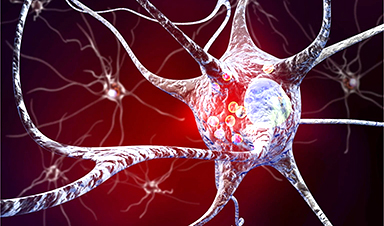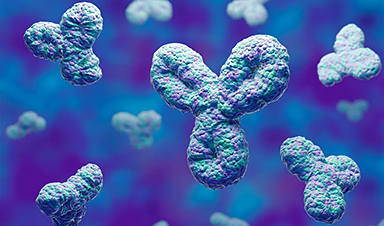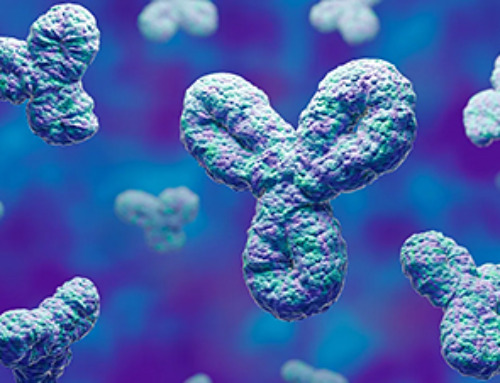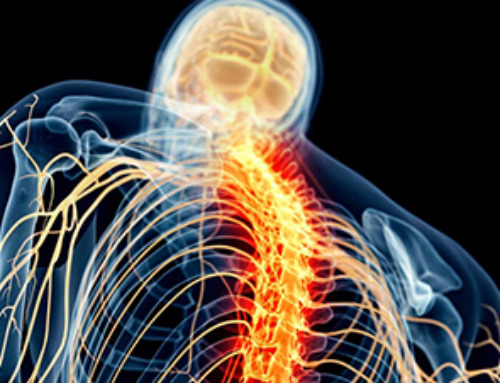Scientists propose a new model for classifying Parkinson’s.
The complexity of Parkinson’s disease poses significant challenges in developing effective treatments. This complexity stems from various causes, including genetics and environmental factors, coupled with the broad spectrum of symptoms that patients may experience, which can vary greatly in severity. Additionally, the diagnosis of Parkinson’s often occurs late, sometimes a decade or more after the disease has begun to affect the brain.
In a paper published in The Lancet Neurology, a group of scientists argue that this complexity demands a new way of classifying the disease for research purposes, one based not on clinical diagnosis but biology. The authors have called their biological model “SynNeurGe.”
The Components of SynNeurGe
The “Syn” stands for alpha-synuclein, a protein that in most Parkinson’s patients causes abnormal deposits called Lewy bodies. Abnormalities in synuclein identify and probably cause degenerative changes in the brain that can impact movement, thinking, behavior, and mood.
“Neur” stands for neurodegeneration. This is the breakdown of the function of neurons in the brain. In doctor’s offices, specific neurons in the dopamine system are the way that Parkinson’s is diagnosed. In the SynNeurGe model, however, neurodegeneration in all areas of the brain are included in the classification.
The “Ge” stands for genetics. The role of genetics in Parkinson’s is complex. Mutations in many different genes have been found to predispose someone to the disease. The likelihood of developing Parkinson’s disease depends on the gene involved, the specific mutation within the gene, and environmental exposures.
Advancing Research and Treatment
The authors argue that for research purposes, patients should be classified by the presence or absence of these three factors. This would allow the identification of Parkinson’s patients before symptoms appear, and aid the development of treatments tailored to patients’ unique biology. Right now, patients are diagnosed based on symptoms and signs, even though the disease may have been present in their brains for many years. By shifting classification criteria, researchers can identify disease earlier (even before people may experience symptoms), and target specific patient groups that have more in common with each other biologically, giving drug development a higher chance of success.
“Although this is still for research purposes, this is a major shift in thinking,” says Dr. Ron Postuma, a clinician-scientist at The Neuro (Montreal Neurological Institute-Hospital) of McGill University and one of the study’s authors. “If you think of it, it’s quite unusual that we’ve had to wait until Parkinson’s patients have important symptoms before we could make a diagnosis. We don’t wait for someone to feel pain from cancer before we diagnose it. Instead, we detect and diagnose it, hopefully, before someone is aware of any symptoms. This research classification is a critical step towards bringing our thinking about Parkinson’s into the 21st century.”
Reference: “A biological classification of Parkinson’s disease: the SynNeurGe research diagnostic criteria” by Günter U Höglinger, Charles H Adler, Daniela Berg, Christine Klein, Tiago F Outeiro, Werner Poewe, Ronald Postuma, A Jon Stoessl and Anthony E Lang, February 2024, The Lancet Neurology.
DOI: 10.1016/S1474-4422(23)00404-0
The study was funded by the Canada Foundation for Innovation, the Michael J. Fox Foundation for Parkinson’s Research, the Canadian Institutes of Health Research, Fonds de Recherche du Quebec–Santé, the Weston-Garfield Foundation, the Parkinson Society of Canada, the Webster Foundation, and the National Institute of Health.
News
Specially engineered antibody delivers RNA therapy to treatment-resistant tumors
Elias Quijano, PhD; Diana Martinez-Saucedo, PhD; Zaira Ianniello, PhD; and Natasha Pinto-Medici, PhD, there are 25 other contributors, most from Yale's Department of Therapeutic Radiology and from the departments of genetics, molecular biophysics and [...]
Vaccinated women face fewer cervical cancer risks
New data from Denmark shows the HPV vaccine’s powerful long-term impact, while also revealing why cervical cancer screening is still essential. A Danish study published in the journal Eurosurveillance reports that women who received the human [...]
3D-printed implant offers a potential new route to repair spinal cord injuries
A research team at RCSI University of Medicine and Health Sciences has developed a 3-D printed implant to deliver electrical stimulation to injured areas of the spinal cord, offering a potential new route to [...]
Nanocrystals Carrying Radioisotopes Offer New Hope for Cancer Treatment
The Science Scientists have developed tiny nanocrystal particles made up of isotopes of the elements lanthanum, vanadium, and oxygen for use in treating cancer. These crystals are smaller than many microbes and can carry isotopes of [...]
New Once-a-Week Shot Promises Life-Changing Relief for Parkinson’s Patients
A once-a-week shot from Australian scientists could spare people with Parkinson’s the grind of taking pills several times a day. The tiny, biodegradable gel sits under the skin and releases steady doses of two [...]
Weekly injectable drug offers hope for Parkinson’s patients
A new weekly injectable drug could transform the lives of more than eight million people living with Parkinson's disease, potentially replacing the need for multiple daily tablets. Scientists from the University of South Australia [...]
Most Plastic in the Ocean Is Invisible—And Deadly
Nanoplastics—particles smaller than a human hair—can pass through cell walls and enter the food web. New research suggest 27 million metric tons of nanoplastics are spread across just the top layer of the North [...]
Repurposed drugs could calm the immune system’s response to nanomedicine
An international study led by researchers at the University of Colorado Anschutz Medical Campus has identified a promising strategy to enhance the safety of nanomedicines, advanced therapies often used in cancer and vaccine treatments, [...]
Nano-Enhanced Hydrogel Strategies for Cartilage Repair
A recent article in Engineering describes the development of a protein-based nanocomposite hydrogel designed to deliver two therapeutic agents—dexamethasone (Dex) and kartogenin (KGN)—to support cartilage repair. The hydrogel is engineered to modulate immune responses and promote [...]
New Cancer Drug Blocks Tumors Without Debilitating Side Effects
A new drug targets RAS-PI3Kα pathways without harmful side effects. It was developed using high-performance computing and AI. A new cancer drug candidate, developed through a collaboration between Lawrence Livermore National Laboratory (LLNL), BridgeBio Oncology [...]
Scientists Are Pretty Close to Replicating the First Thing That Ever Lived
For 400 million years, a leading hypothesis claims, Earth was an “RNA World,” meaning that life must’ve first replicated from RNA before the arrival of proteins and DNA. Unfortunately, scientists have failed to find [...]
Why ‘Peniaphobia’ Is Exploding Among Young People (And Why We Should Be Concerned)
An insidious illness is taking hold among a growing proportion of young people. Little known to the general public, peniaphobia—the fear of becoming poor—is gaining ground among teens and young adults. Discover the causes [...]
Team finds flawed data in recent study relevant to coronavirus antiviral development
The COVID pandemic illustrated how urgently we need antiviral medications capable of treating coronavirus infections. To aid this effort, researchers quickly homed in on part of SARS-CoV-2's molecular structure known as the NiRAN domain—an [...]
Drug-Coated Neural Implants Reduce Immune Rejection
Summary: A new study shows that coating neural prosthetic implants with the anti-inflammatory drug dexamethasone helps reduce the body’s immune response and scar tissue formation. This strategy enhances the long-term performance and stability of electrodes [...]
Scientists discover cancer-fighting bacteria that ‘soak up’ forever chemicals in the body
A family of healthy bacteria may help 'soak up' toxic forever chemicals in the body, warding off their cancerous effects. Forever chemicals, also known as PFAS (per- and polyfluoroalkyl substances), are toxic chemicals that [...]
Johns Hopkins Researchers Uncover a New Way To Kill Cancer Cells
A new study reveals that blocking ribosomal RNA production rewires cancer cell behavior and could help treat genetically unstable tumors. Researchers at the Johns Hopkins Kimmel Cancer Center and the Department of Radiation Oncology and Molecular [...]





















